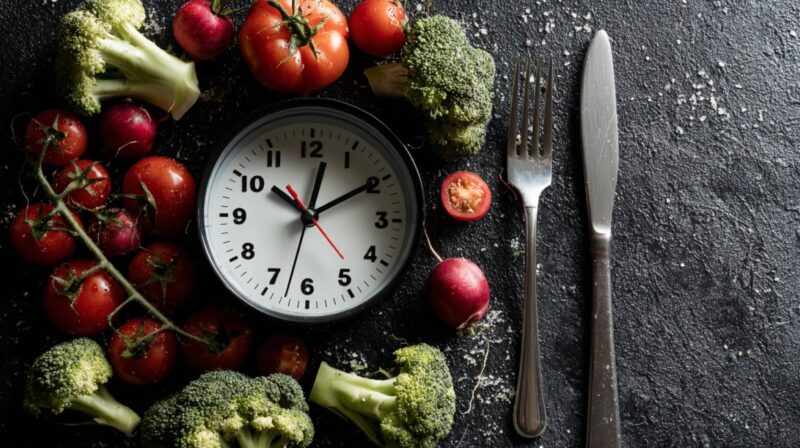8 Simple Tricks to Save Time and Money with Smarter Meal Planning
Meal planning can transform daily life by cutting down on stress, saving money, and ensuring healthier eating habits.
A simple system eliminates the constant struggle of last-minute dinner decisions and reduces food waste that often drains household budgets.
Smart planning does not require complicated steps, only consistent habits that gradually create order in the kitchen.
What follows is a set of eight straightforward tricks designed to help anyone save both time and money while keeping meals enjoyable.
1. Build a Master List of Favorite Meals
Creating a master list of meals your household already enjoys is one of the most effective ways to streamline meal planning, especially if you’re vegan.
A running record keeps decision-making simple and ensures favorites stay in rotation without being forgotten.
Instead of scrambling at the last minute, you can pull straight from your list and assign meals quickly.
Organizing this list into categories allows you to adapt to different situations with ease.
- Quick meals for busy weeknights
- Budget-friendly dishes for tighter weeks
- Special occasion meals for weekends or family gatherings
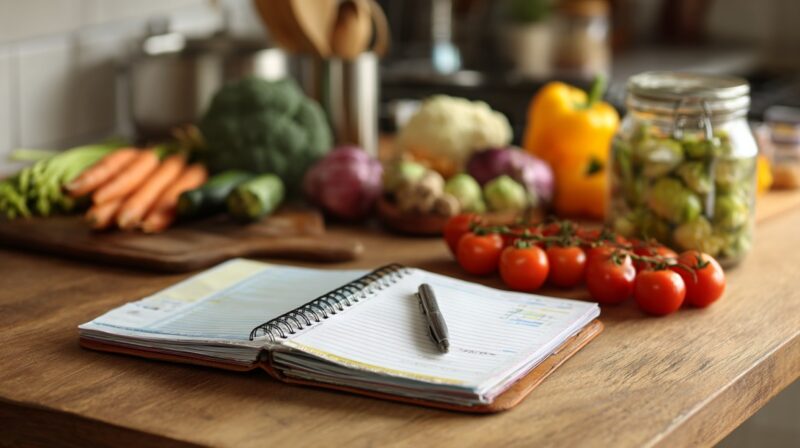
Having this type of organized reference reduces the temptation of takeout and limits unnecessary grocery trips.
Writing everything down on paper, a spreadsheet, or even in custom printed notebooks makes the list easy to update and use repeatedly.
2. Plan Around Your Schedule
Meal planning should always align with your calendar.
By looking at your week before assigning meals, you avoid mismatches between complex recipes and limited free time.
Matching your menu to your routine ensures cooking is manageable instead of overwhelming.
- Assign simple meals to busy weekdays
- Save longer or more involved dishes for weekends
- Use slow cookers or pressure cookers on packed days
- Prep ingredients in advance when evenings will be tight
When meals reflect your schedule, planning feels natural and prevents the frustration of not having enough time to cook.
3. Shop with a Purpose (Not on an Empty Stomach)

Purposeful shopping begins before setting foot in the store.
Taking stock of what you already have ensures you build a plan that makes use of existing ingredients while avoiding waste.
A clear list tied directly to your weekly menu keeps shopping trips efficient and budget-conscious.
- Check pantry, freezer, and fridge before shopping
- Write a focused list aligned with your meal plan
- Stick to the list while shopping to prevent impulse buying
- Avoid going to the store hungry to limit unplanned purchases
Shoppers who follow this system often spend less money, waste less food, and leave the store with only what is necessary.
4. Use the Power of Leftovers and Batch Cooking
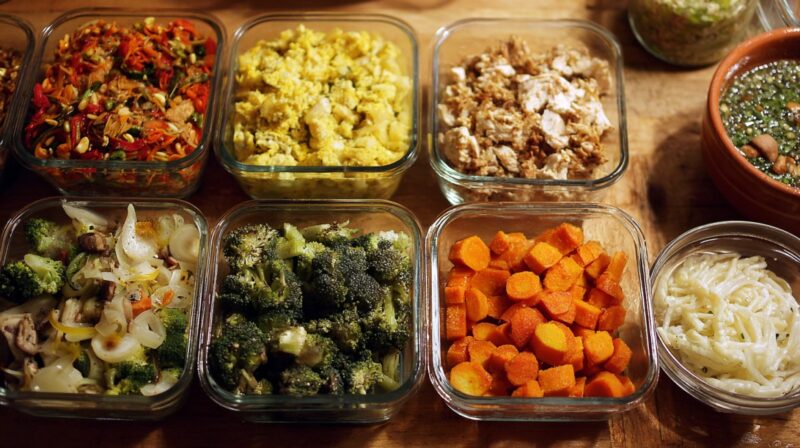
Cooking once and eating twice saves time, effort, and money.
Planning meals with intentional leftovers provides ready-made dinners when life gets busy.
Batch cooking also creates a safety net of freezer-friendly meals that can be reheated without fuss.
- Double recipes to create extra portions
- Freeze additional servings for later in the week or month
- Label and date freezer meals to avoid confusion
- Designate a “leftover night” to clear the fridge
By making leftovers part of the plan, you reduce food waste while gaining back valuable hours.
5. Include One New Meal Each Week

Adding variety to meal planning does not have to feel like a massive undertaking.
Too much change at once can create unnecessary stress, but gradually introducing one new recipe each week keeps things fresh without overwhelming the process.
It allows experimentation while still relying on the comfort of familiar meals that everyone enjoys.
Families gain exposure to different flavors, cooking techniques, and ingredients in a low-pressure way.
- Rotate one new recipe into the plan each week to maintain variety
- Keep the rest of the menu simple and familiar for consistency
- Involve the family in rating new meals and giving feedback
- Add successful dishes to the master list so they become part of future plans
- Use seasonal ingredients or sale items as inspiration for new recipes
Experimenting in small steps makes meal planning more engaging and fun.
Families not only eat healthier by discovering different foods, but they also strengthen their routine by adding dishes that become long-term favorites.
6. Use What You Already Have First
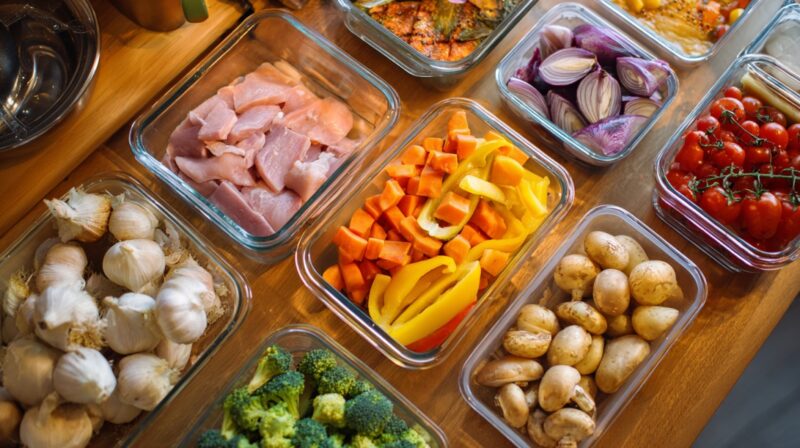
Many households overlook what is already in the kitchen.
By designing meals around what’s on hand, grocery costs decrease while waste is minimized.
Creating a system where older ingredients are used first keeps food fresh and budgets under control.
- Take inventory before creating your plan
- Prioritize soon-to-expire items in recipes
- Rotate pantry items using a “first in, first out” system
- Avoid unnecessary duplicates by checking stock regularly
Meals that prioritize existing supplies are resourceful, cost-effective, and help maintain an organized kitchen.
7. Embrace Theme Nights for Simplicity
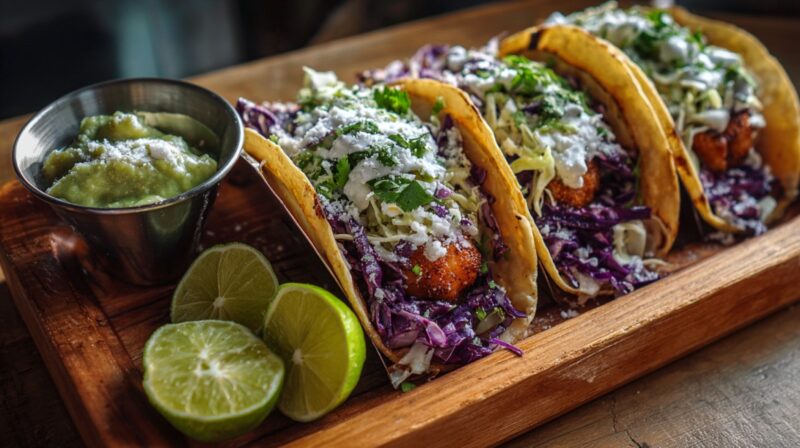
Theme nights bring structure and fun into the meal planning process.
Assigning certain types of food to specific days eliminates daily decision-making and builds consistency that makes shopping easier.
- Taco Tuesday or Fajita Friday
- Pasta Night on Thursdays
- Slow Cooker Saturday or Soup Sunday
- Breakfast-for-dinner night once a week
Families enjoy the routine while still having the flexibility to vary recipes within each theme.
Planning becomes faster, and grocery shopping becomes predictable.
8. Cook More Plant-Based and Seasonal Meals
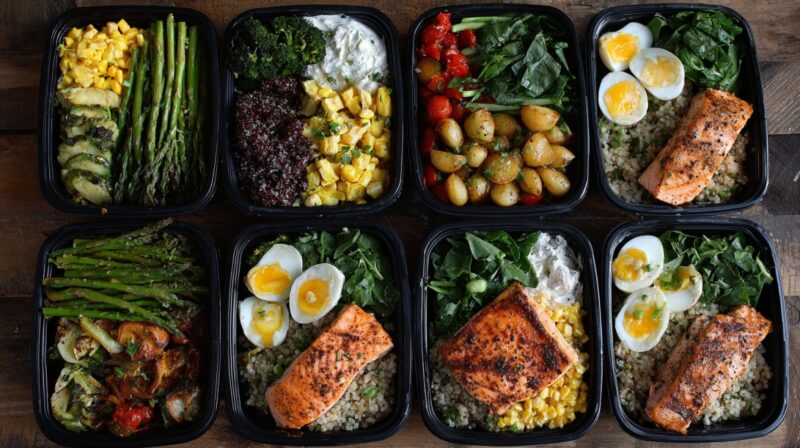
Plant-based meals are both cost-effective and healthy, making them an essential part of smarter meal planning.
Seasonal produce also reduces costs while offering fresher options compared to out-of-season items.
- Use plant-based proteins like beans, lentils, tofu, and eggs
- Rely on seasonal fruits and vegetables for freshness and lower prices
- Shop at farmers’ markets or use grocery flyers to find deals
- Mix plant-based meals into the rotation for budget balance
Focusing on these ingredients leads to a healthier, more affordable diet while ensuring meals remain varied and flavorful.
The Bottom Line
Smarter meal planning is not about rigid systems but about simple tricks that make daily life easier.
Building a favorite meals list, scheduling based on your week, shopping with intention, and embracing leftovers are strategies that save both time and money.
Adding new meals, using what is already in stock, applying theme nights, and leaning on plant-based and seasonal options round out an efficient system.

